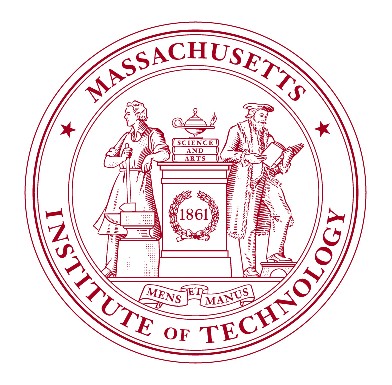On the Design of CPS using Arbitrated Network Control Systems
CPSWeek 2014 (April 14, 2014)
Presenters:
Anuradha Annaswamy (Massachusetts Institute of Technology, USA, aanna@mit.edu)
Samarjit Chakraborty (TU Munich, Germany, samarjit@tum.de)
Dip Goswami (Technical University of Eindhoven, Netherlands, d.goswami@tue.nl)
Damoon Soudbakhsh (Massachusetts Institute of Technology, USA, damoon@mit.edu)
When/Where
This half-day tutorial (T4) will be held on Monday, April 14 from 9:00am to 1:00pm as part of the workshop and tutorial day.
Room: Jade 1 (Second Floor, Convention Hall)
See https://www.cpsweek2014.org/cpsweek2014/worktut.html for more information.
Abstract
This tutorial will focus on “control/architecture co‐design” in settings where multiple control applications are implemented on a distributed architecture. Such architectures will be assumed to consist of multiple processors communicating over a system made up of several buses and gateways implementing different protocols examples of which routinely occur in FlexRay, CAN and Ethernet. In this tutorial, we will discuss co‐design procedures where the control designs are in sync with the implementation architecture and efficiently accommodate all control performance specifications including stability and tracking performance in the transient and steady state, and all architectural and resource constraints.
There has been a significant amount of work in the area of networked control systems (NCS), which primarily deal with control applications communicating over wireless networks, where messages suffer loss, delay and jitter. In contrast to such traditional NCS, the cyberphysical systems that we focus on have a distributed architecture where questions related to the arbitration of control tasks (e.g., how to partition and map the control tasks) with a synergistic design of the underlying implementation architecture (e.g. how to tune the various bus protocols, how many ECUs and how are they connected?). The issue of co‐design in such settings becomes considerably more important, instead of merely taking into account the properties of the wireless network in designing the control models but rather design the network itself along with the controllers. Apart from discussing the necessary analysis and synthesis methods for this co-design, we will also present several examples and realistic case studies from the automotive electronics and software domain in this tutorial.
Topic and relation to CPSWeek
The focus of the tutorial will be on design techniques for the automotive architecture and control software domain. The topics to be covered will constitute core cyber‐physical systems design principles and are closely related to those covered by the CPSWeek conferences such as HSCC, RTAS and ICCPS.
Target audience
This tutorial will be targeted towards an audience who has some background in embedded systems design but is new to control theory, automotive architectures and cyber‐physical systems. The level of the tutorial will be from introductory to intermediate and no background in advanced system‐level design techniques will be assumed. The material to be presented will be useful to researchers from the embedded systems domain, students, and software developers who are interested in automotive‐ and cyber‐physical systems‐related methods and design questions.
Tutorial outline
Introduction to Embedded Systems and Control (Samarjit Chakraborty): The first part will discuss introduction to cyber-physical systems (CPS), current practices, architectures and schedules of CPS, and the constraints for control design and scheduling policies.
Control theory fundamentals (Anuradha Annaswamy): The second part of the tutorial will cover fundamental principles of control theory, control performance, adaptive control theory, and relevant control tools for the co-design of control and implementation architecture.
Communication Architectures (Dip Goswami): The third part of the tutorial will talk about automotive architectures, various communication bus protocols such as FlexRay and CAN, how to formally analyze such architectures and various design and optimization techniques that arise in this domain.
Control/Communication Co-design (Damoon Soudbakhsh): The final part will discuss various co‐design techniques; more specifically, topics such as how to design controllers that can tolerate bounded message delay violations, and how to exploit hybrid and hierarchical time‐ and event‐triggered architectures for designing control applications.
Biographies
Anuradha Annaswamy the director of the Active‐Adaptive Control Laboratory and a Senior Research Scientist in the Department of Mechanical Engineering at MIT. She received her Ph.D. in Electrical Engineering from Yale University in 1985 and subsequently has been a member of the faculty at Yale, Boston University, and MIT. Her research interests pertain to adaptive control theory and applications to aerospace and automotive control, active control of noise in thermo‐fluid systems, active emission control, control of autonomous systems, control of smart grid‐oriented markets and integration with renewables, and co‐design of control and distributed embedded systems. She has authored numerous journal and conference papers and a graduate textbook on adaptive systems. Dr. Annaswamy has received several awards including the George Axelby and Control Systems Magazine best paper awards from the IEEE Control Systems Society, the Presidential Young Investigator award from the National Science Foundation, the Hans Fisher Senior Fellowship from the Institute for Advanced Study at the Technische Universität München in 2008, and the Donald Groen Julius Prize for 2008 from the Institute of Mechanical Engineers. Dr. Annaswamy is a Fellow of the IEEE and a member of AIAA.
Samarjit Chakraborty is a Professor of Electrical Engineering at TU Munich in Germany, where he heads the Institute for Real‐Time Computer Systems (RCS). Prior to joining TU Munich, from 2003 –2008 he was an Assistant Professor of Computer Science at the National University of Singapore. He obtained his Ph.D. in Electrical and Computer Engineering from ETH Zurich in 2003. His research interests cover all aspects of system‐level design of real‐time embedded systems and software, and his work has attracted funding from companies like Intel, General Motors, Bosch and BMW. Dr. Chakraborty regularly serves on the technical program committees of several conferences in the area of real‐time and embedded systems, such as DATE, CODES+ISSS, ASP‐DAC, RTSS and RTAS. He was the TPC Co‐Chair of EMSOFT 2009, and is currently serving as the General Co‐Chair of Embedded Systems Week 2010. Apart from more than 80 referred journal and conference articles, he has authored a number of patents and regularly gives invited talks and tutorials at various research labs and international conferences (such as ESWeek, VLSI Design, ACM Multimedia and ICME). For his Ph.D. thesis, he received the ETH Medal and the European Design and Automation Association’s “Outstanding Doctoral Dissertation Award” in 2004. His work has also received a HiPEAC Paper Award in 2009 and Best Paper Award nominations at DAC 2005, CODES+ISSS 2006, ECRTS 2007, and CODES+ISSS 2008.
Dip Goswami is an assistant professor at Technical University of Eindhoven, Netherlands. He obtained his Ph.D. in Electrical and Computer Engineering from the National University of Singapore (NUS) in 2009. Subsequently, he was a post‐doctoral fellow at the School of Computing of NUS, where he worked on a General Motors funded project. During 2010-2012, he was an Alexander von Humboldt Postdoctoral Fellow at TU Munich, Germany. His research focuses on various design aspects of embedded control systems in resource-constrained domains such as automotive and robotics. He has published in several international journals and conferences in the fields of control systems, robotics and cyber‐physical systems. He has also served on the TPCs of several conferences, such as RTSS, RTAS, DSD, SIES and EUC.
Damoon Soudbakhsh is a postdoctoral associate at Massachusetts Institute of Technology. He earned his BSc and MSc from Sharif university of Technology, Tehran, Iran, and PhD from The George Washington University, Washington DC, USA. Prior to joining MIT, he was a postdoctoral associate at Rutgers University. Currently he is working on co-design of NCS and development of fast control algorithms for hardware implementation. He has worked on several active safety vehicle projects such as development of crash avoidance systems, and an advanced active gas pedal system. Also, he worked on biomechanical projects such as development of a knee arthrometer, and development of an exoskeleton assistive device, and recently on analysis of human/bicycle stability. He received Khwarizmi Youth National Award in Iran and Dwight Eisenhower Transportation Fellowship Award from the department of transportation (US-DOT). His research interests include cyber-physical systems, linear and nonlinear control, biomechanics, autonomous vehicles, optimization, and intelligent transportation systems. He is a member of IEEE, ASME, and SAE.


